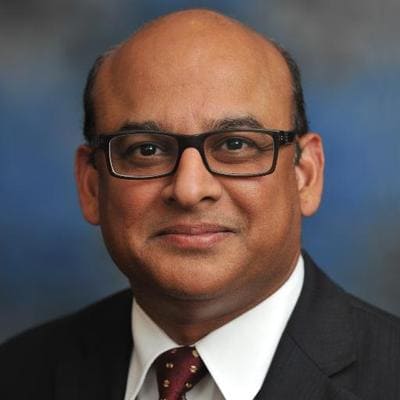Platform banking as a new business model has been saved

Perspectives
Platform banking as a new business model
An exciting opportunity resulting from the new wave of disruption
Digital platforms are poised to dramatically alter business models, competitive structure, pricing, and customer behavior in banking, similar to what we have observed in other industries, such as retail.
December 11, 2019
An article by Val Srinivas and Jan-Thomas Schoeps, Banking & Capital Markets research leader at the Deloitte Center for Financial Services, Deloitte Services LP
Digital platforms are poised to dramatically alter business models, competitive structure, pricing, and customer behavior in banking, similar to what we have observed in other industries, such as retail.
Platformification is about better serving customer needs and being able to offer services beyond a limited portfolio. Customers can benefit from platform banking in multiple ways: convenience, greater choice, ability to compare products, potentially better pricing, etc.
But becoming a platform, in any domain, is easier said than done. What capabilities must a bank master to become a viable platform? In this article, we lay out some considerations.
What is platform banking?
Platform banking is a digital marketplace, owned and operated by a bank or another (potentially nonbank) entity, that provides banking and possibly nonbanking services. It is not the same as open banking; however, the latter enables and amplifies the former.1 Take home mortgages, for instance: Banks may not only provide loans, but also become matchmakers in helping customers buy homeowner’s insurance, house maintenance services, or even furniture on the bank’s platform. This scenario may apply to car loans or business loans as well.
Given its potential importance in the future, we discuss platform banking in our 2020 Banking and Capital Markets Outlook, where we suggest that in the next few years some banks will likely partner with others in the ecosystem to become de facto platforms, offering services beyond banking.
To some, platform banking might seem a far-fetched construct; understandably so, since it is still a nascent trend. But we are seeing more such examples in financial services. One example is Paytm, an Indian e-commerce payment system that has evolved from a single-service entity in the prepaid mobile business to a platform that enables customers to buy airline, bus, and movie tickets; reserve hotels; and rent cars from other providers.
Users are interested in platform banking
There appears to be a latent appetite for platform services among consumers, as evidenced by two separate Deloitte surveys. One of the surveys was geared toward retail banking, and the second was conducted in the context of payments and credit cards. We found that about a third of retail bank customers surveyed in the United States are interested in a platform service offered by their primary bank (Figure 1), and a little over half the respondents are open to the idea of a “superstore” concept, i.e., a supermarket-like platform offering financial and nonfinancial services (Figure 2).2 Notably, younger consumers showed a significantly more positive attitude toward these concepts in both surveys.
Figure 1. Surveyed US consumers’ willingness to use platform banking services

Source: Deloitte Center for Financial Services. US consumer open banking survey, 2019.
Interestingly, consumers indicated in both surveys that banks (or established credit card providers in the second survey) are best positioned to offer such platform services. This might not be surprising, given that banks, contrary to some popular perception, do enjoy high customer trust. More than 8 in 10 surveyed customers said they trust their primary bank.3
Figure 2. Interest of surveyed customers in using a financial superstore app in the United States

Source: Deloitte Center for Financial Services. US consumer payments survey, 2019.
Platform banking is not restricted to retail financial services—it does apply in the institutional context as well, whether for corporate customers or buy-side firms. FXall, an electronic, foreign exchange trading platform, offers access to over 180 liquidity providers.4 While FXall is a third-party platform, it illustrates the potential of platforms in the institutional markets as well.
How should banks prepare for a platform world?
First and foremost, selecting the right marketplace, customers, and partners is the most important consideration. Identification of partners should happen on multiple dimensions, including their product selection and quality, ability to serve customers seamlessly, risk profile, financial strength, and brand reputation. Other factors, such as revenue-sharing models and allocation of risk ownership between the platform operator and the service provider, are also important.
Of course, platforms thrive on network effects, so scale is typically an imperative for success. And achieving scale may take longer in some markets than others. As a result, platforms need financial resilience to withstand obstacles until the optimal level of scale is achieved.
Modern technology infrastructure and solutions are vital
Digital platforms cannot thrive without a modern technology infrastructure built around robust APIs. This is generally necessary for superior customer experience and seamless integration of service providers. Also, the ability to leverage new types of data, including unstructured data, and use machine learning techniques to assess customer needs and match them with providers is expected to be core competencies. Such data and insights can increase a platform’s network effects.5 And, generally, these benefits may be more easily accrued in the cloud. Building these platforms in the cloud, given its potential for scale, modernization, and agility, will likely be the logical approach for many banks instead of on-premise/hybrid solutions.
Risk and compliance considerations
As sharing of customer data between buyers and sellers is integral to platforms, new risks and privacy considerations become key. Third-party relationships will likely also expose banks to various forms of operational risk, including information misuse and theft (insider risk), system failures, business disruptions, legal disputes, and regulatory noncompliance. They may also introduce reputational risks for the platform operator. Also, questions about who owns the customer and the customer’s data could become prickly issues.
Platform banking is expected to also raise new regulatory compliance questions. For instance, who would be responsible for fraud or transaction failure/misposting on a platform? Is it the platform operator or the service provider? Similarly, how should adherence to existing laws, whether related to disparate impact or unfair and deceptive practices, be observed with multiple parties involved? How should the responsibility of preserving customer privacy be allocated? Answers to these questions may not be easy but should be addressed at the outset with regulators.
Platform banking changes the operating model
Furthermore, migrating to a platform business model also requires a change in mindset, culture, and talent models. Operating a multi-entity platform and thriving in an “open” environment could entail a new set of skills. For instance, how does the role of client service professionals in a platform banking context change? Thinking more holistically about client needs and matching them with different providers will be key. Redesign of staff training, process, and documentation for a platform model will likely be necessary as well.
Business strategy impacts: Revolution or evolution?
Finally, platform banking models raise a number of questions regarding business strategy. Is platform banking a complement or a substitute to existing businesses? Should banks explore this model on the side and separate from the core business? Or should they radically redesign their main business toward the platform approach?
The transition to a new business model enabled by platform banking isn’t expected to be easy, but the payoff could be significant. While there would be many questions to address in developing platform capabilities, banks should not wait too long to explore this model. Being a first mover can offer substantial advantages. And, quite possibly, the world of platform banking may arrive sooner than many expect.
What do you think?
Join the conversation on Twitter: @DeloitteFinSvcs.
Endnotes
1 For more details on open banking, please see the Deloitte report “Executing the open banking strategy in the United States.” https://www2.deloitte.com/us/en/insights/industry/financial-services/open-banking-model-strategy-united-states.html.
2 We asked consumers about a “superstore” concept, i.e., “a platform that enables consumers to (a) access financial products (such as personal loan or a car loan) from different banks or other institutions, (b) conduct other purchases, like train or movie tickets, book flights, pay utility bills, etc., and (c) manage personal finances, including budgeting.”
3 Based on Deloitte’s US consumer open banking survey, 2019.
4 Refinitiv, “FXall electronic trading platform,” https://www.refinitiv.com/en/products/fxall-electronic-trading-platform.
5 Feng Zhu and Marco Iansiti, “Why Some Platforms Thrive and Others Don’t,” Harvard Business Review, February 2019, https://hbr.org/2019/01/why-some-platforms-thrive-and-others-dont.
QuickLook is a weekly blog from the Deloitte Center for Financial Services about technology, innovation, growth, regulation, and other challenges facing the industry. The views expressed in this blog are those of the blogger and not official statements by Deloitte or any of its affiliates or member firms.





